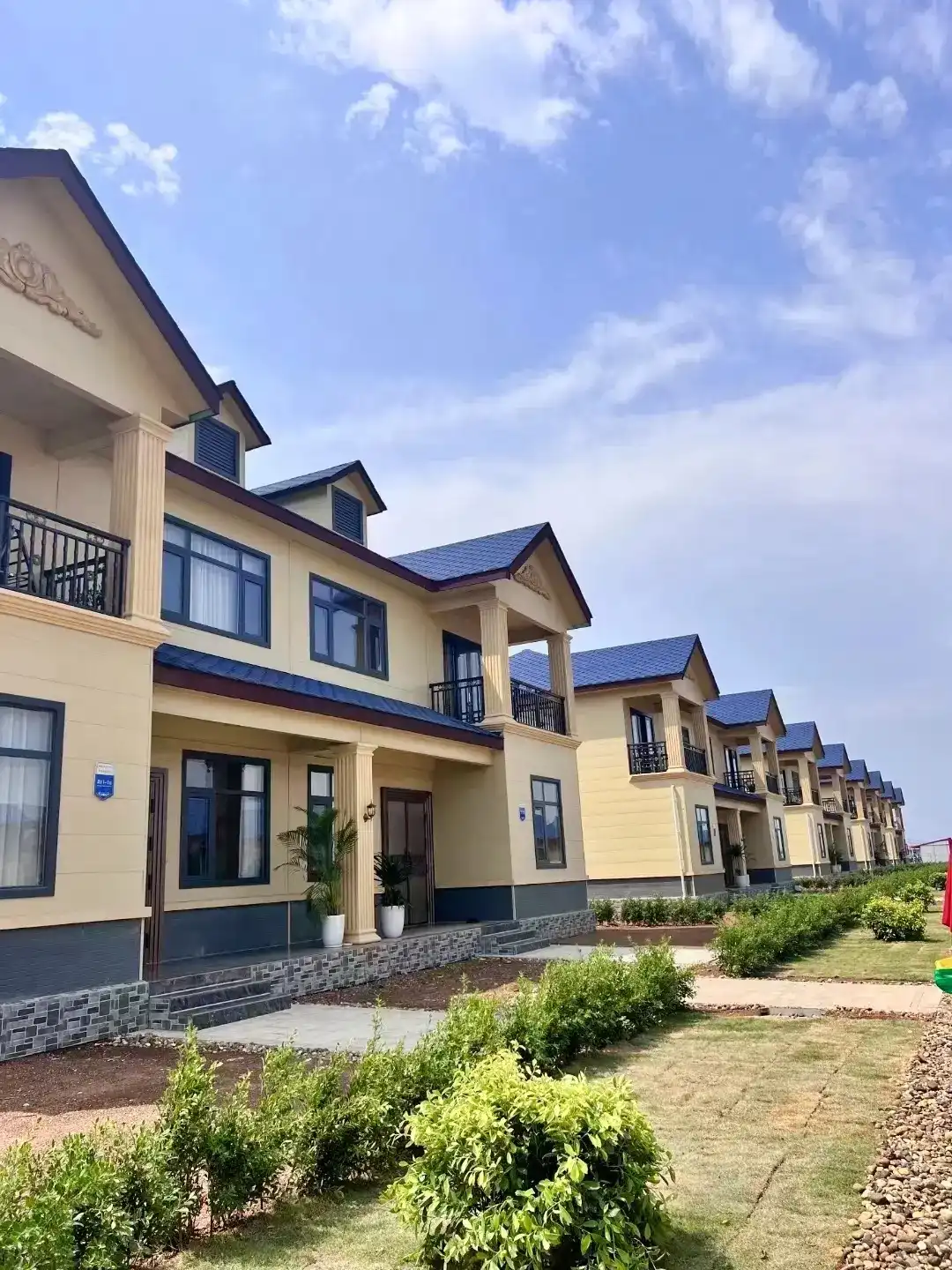The Advantages of PVC Wall Cladding: A Low-Maintenance Alternative
While metal sidings offer durability, PVC wall cladding presents an even more low-maintenance option for homeowners and builders. PVC wall cladding, known for its unparalleled durability and long-lasting beauty, has become increasingly popular in both interior and exterior applications.
Durability and Weather Resistance
PVC wall cladding stands out for its exceptional durability and resilience against harsh weather conditions. Unlike traditional metal sidings that can oxidize and rust over time, especially in areas exposed to salty air or acid rain, PVC cladding resists corrosion entirely. Its non-porous surface prevents moisture absorption, eliminating concerns about rot, mold, or mildew.
Whether subjected to intense sunlight, heavy rainfall, or coastal humidity, PVC maintains its structural integrity and appearance over the years. This long-term performance makes it ideal for both residential and commercial buildings in variable climates, reducing the need for frequent repairs or replacements due to weather-related damage.
Minimal Maintenance Requirements
One of the greatest advantages of PVC wall cladding is its minimal maintenance needs. Unlike wood or metal siding that may require regular repainting, sealing, or rust removal, PVC cladding simply needs an occasional rinse with soap and water. Its smooth, non-stick surface resists dirt accumulation, making cleaning a quick and hassle-free task.
There’s no need for chemical cleaners or special treatments. This ease of upkeep not only saves time but also significantly lowers the lifetime maintenance costs associated with exterior building finishes. As a result, homeowners and property managers often choose PVC for its convenience and long-term cost-effectiveness.
Versatility in Design
PVC wall cladding offers a broad spectrum of design possibilities, catering to a variety of architectural preferences. Available in numerous colors, textures, and patterns, it can easily mimic materials like wood, stone, or metal while retaining the lightweight and durable nature of PVC. This flexibility allows designers to achieve both modern and traditional looks with ease.
Whether used for accent walls or full facades, PVC cladding provides aesthetic value without compromising functionality. It can be tailored to suit residential, commercial, or industrial projects, and the colorfast technology ensures that the cladding retains its vibrant appearance for years without fading.
Energy Efficiency and Safety Features of PVC Wall Cladding
Beyond its low maintenance benefits, PVC wall cladding offers significant advantages in terms of energy efficiency and safety, setting it apart from traditional metal sidings.
Effective Insulation and Thermal Control
PVC wall cladding is not only an aesthetic solution but also a functional one when it comes to thermal regulation. By offering an extra barrier between the building’s interior and the external environment, it contributes to improved insulation. Many modern PVC cladding systems incorporate optional foam core insulation, further enhancing their thermal performance.
This added insulation layer helps stabilize indoor temperatures, reducing the need for excessive heating in the winter or cooling in the summer. As a result, energy consumption is minimized, leading to lower utility bills. These qualities make PVC wall cladding a smart, eco-conscious choice for sustainable construction and energy-efficient building design.
Fire Safety Considerations
In any construction project, fire safety is a critical factor, and PVC wall cladding addresses this concern effectively. The panels are made from fire-retardant materials that do not easily ignite, significantly reducing fire risks. With a Class B1 fire rating, the cladding provides a strong defense against fire hazards, offering more safety than some alternative siding materials like untreated wood or certain metals.
This fire-resistant nature makes PVC cladding suitable for both residential and commercial structures where enhanced safety standards are required. It acts as an additional protective layer, giving occupants more time to evacuate and limiting the spread of flames in the event of a fire.
Lightweight Yet Robust Construction
PVC wall cladding strikes an ideal balance between being lightweight and highly durable. Its reduced weight simplifies transportation and handling on-site, making it quicker and easier to install than heavier materials such as fiber cement or metal panels. This leads to decreased labor costs and shorter project timelines.
Despite its lightness, PVC cladding provides exceptional strength and resistance to impact, weather, and UV exposure. It withstands the rigors of outdoor environments without cracking, warping, or fading. These characteristics make it particularly advantageous for retrofits, high-rise buildings, or structures where minimizing additional load on the frame is essential.
Technical Specifications and Quality Assurance
Understanding the technical aspects of PVC wall cladding can help in making informed decisions about its use in construction projects.
Material Composition and Dimensions
PVC wall cladding is manufactured using high-quality PVC, ensuring its durability and performance. It's available in various thicknesses including 5mm, 10mm, 15mm, and custom sizes to suit different application needs. Standard lengths of 3m and 4m are common, with customization options available for specific project requirements.
Aesthetic Options
Color options for PVC wall cladding typically include white, cream, and grey, with custom colors available to match specific design schemes. Surface treatments can be smooth, textured, or embossed, providing versatility in achieving desired aesthetic effects.
Quality Certifications
To ensure the highest standards of quality and safety, reputable manufacturers of PVC wall cladding obtain certifications such as ISO, CE, and UL. These certifications attest to the product's compliance with international quality and safety standards, providing peace of mind to builders and homeowners alike.
Conclusion
While metal house sidings offer durability with minimal maintenance, PVC wall cladding emerges as a superior alternative in many aspects. Its low maintenance requirements, coupled with energy efficiency, fire safety, and versatile design options, make it an attractive choice for modern construction projects. For those seeking to explore innovative cladding solutions that combine style, practicality, and eco-friendliness, PVC wall cladding deserves serious consideration. To learn more about exterior cladding and facade solutions, including PVC wall cladding options, feel free to contact us at info@sdqsc.com.